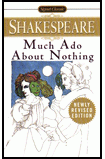Explore teaching activities to be used before, during, and after reading Shakespeare's plays.
Subjects:
Page 2 of 3
While Reading the Play
Shakespeare’s plays are meant to be seen, heard and produced. With this in mind students’ early experiences with Shakespeare can be more enjoyable by employing classroom drama.
Reading Activities:
- Choral Reading: Assign several students to each part. Each character’s group previews the scene, determining the cadence, inflections, volume, pace, pronunciations…Each group practices its part, experimenting with the above. Combine all parts, chorally reading the scene as a class. Tape the presentation.
- Readers Theater: Divide the class into groups, assigning each group a different scene. Be sure each group has enough members to play all the characters. Each group previews and rehearses the scene, as above. In Readers Theater, voices must show the action of the plot. Practice and tape the scenes until the students are fluent. Present the scenes to the class.
- Story Theater: This can be done as a variation of Readers Theater. Two students in each group portray each character: one reads the part, the other acts it. Have each group practice, this time adding action. Videotape and critique.
- Enacting Scripts: A classroom production need not be complex. Assign several students to portray each character. Analyze each character in a group discussing how they will portray the character’s part. Divide them into casts, being sure that each student has an opportunity to play a role. Allow individual casts to practice one or more scenes. Finally, put the play together. (Note: (A) Not all scenes need to be presented; select those that move the action of the plot. You can narrate between the scenes so that the important information is included. (B) Students need not memorize the lines.)
- Rehearsing is a key element to success of classroom drama. Prior to rehearsal discuss: the scene(s) to be rehearsed, characters in the scene(s), action in the scene(s), vocabulary, setting and any dramatic elements employed.
- After each scene is presented, review it with the class. If you have taped the scene, play the tape as you discuss. What happens in the scene? Is the action rising or falling? Has the climax occurred? How is the character changing? How are the characters relating to each other? What is likely to happen next?
- Freewrite, perhaps from the perspective of one character, what has occurred in the presented scene, how s/he is feeling, ho s/he feels about the other characters in the play, what is likely to happen next….This becomes a diary each student keeps throughout the reading of the play.














